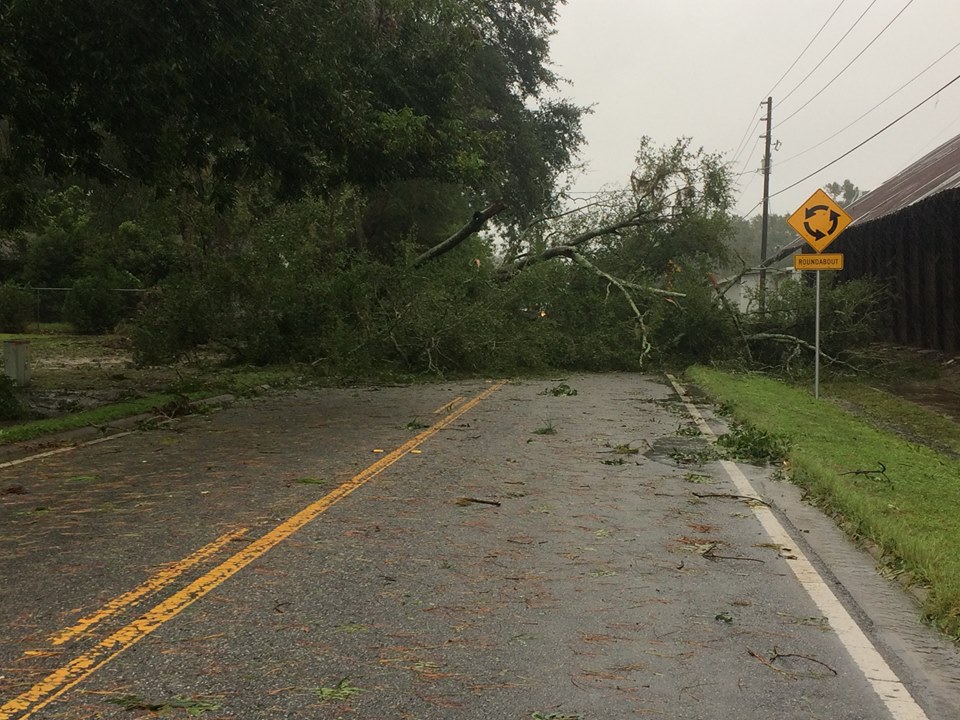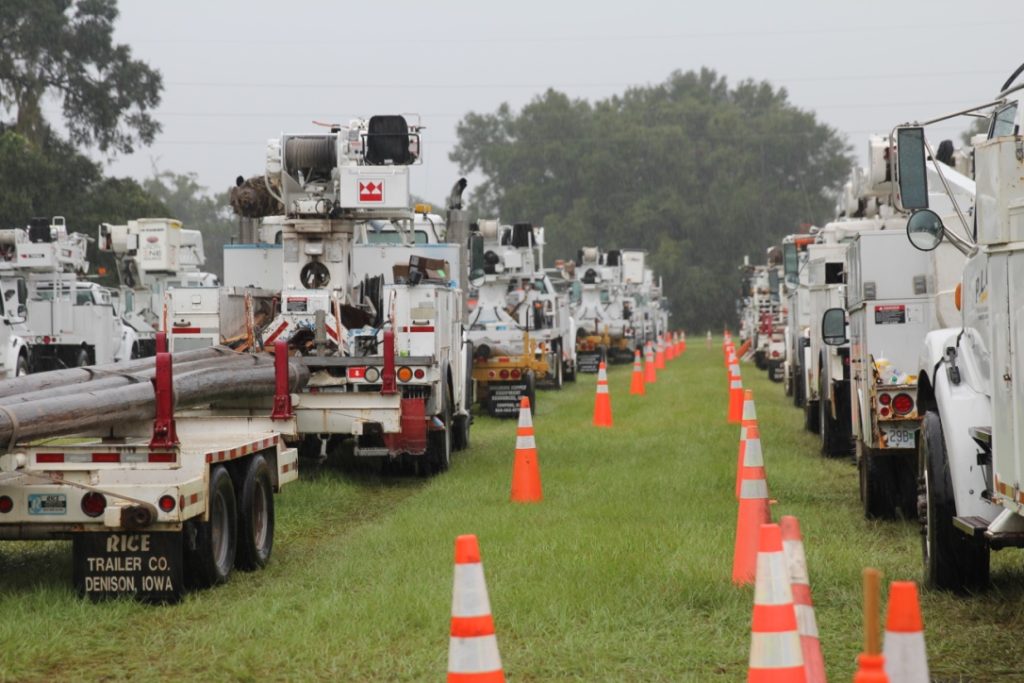
In a show of solidarity at a time of need, nearly 2,000 electric cooperative crews mobilized to restore power to an estimated 1 million members left in the dark as Hurricane Irma left a path of destruction through the Southeast.
Confronting the aftermath of high winds and heavy rain, mutual aid linemen from more than 25 states were working at co-ops in Florida, Georgia and South Carolina. In some spots, full restoration could take weeks, officials warned.
Lee County Electric Cooperative had 170,000 meters out in the hard-hit Fort Myers area, said Karen Ryan, manager of public relations for the co-op, which serves five counties, including the area that includes Marco Island.
“There’s extensive damage,” said Ryan. “Our early prediction is that it is probably going to be two to three weeks before they have power there.”
Crews and contractors from several states were on route or had already arrived at the co-op’s headquarters and other staging points, and were expected to plunge into restoration work as soon as conditions allowed.
“We have crews from Ohio, Texas, Georgia and more co-ops are calling to say they’ll send help when they need it,” said Ryan. She compared damage from the storm to that faced following Hurricane Charley in 1986, but not as extensive as the devastation left by Andrew in 1992.
NRECA is working with the Department of Energy and other federal agencies to ensure that co-ops have access to the resources they need as they work to restore power.
Downgraded to tropical storm status as its power ebbed near the Florida panhandle, Irma hit the Florida Keys as a Category 4 storm on Sept. 10
It took out nearly 22,000 of the meters served by Tavernier-based Florida Keys EC. Co-op crews were expected to begin damage assessment and restoration work in their mostly evacuated service territory as conditions allowed.
“Irma inundated SECO Energy’s service area with hurricane-force winds from Sunday afternoon through Monday morning,” said officials from the Sumterville, Florida-based co-op.
More than half of the SECO’s nearly 200,000 meters were knocked out before winds subsided, even as bands of heavy rain continued over central Florida.
“Eight SECO substations are completely out due to transmission outages, including six Duke Energy transmission outages, one City of Ocala transmission outage and one SECO-owned transmission outage,” officials said.
SECO officials also warned that even before damage assessment could begin, repairs were likely to take “days or even weeks” because of extensive damage to electric system components and the scope of restoration work that would be needed.

As the storm moved north, co-ops in Georgia bore the brunt of high winds and torrents of rain. As of 1 p.m. Sept. 11, co-ops on the state reported 320,703 outages, a jump from 31,000 in just a few hours.
The Georgia Electric Membership Corp., based in Tucker, attributed the surge of outages to tropical-storm force winds ranging from 40 mph to 60 mph that felled trees and blew debris on power lines.
The statewide said Georgia co-ops are working with co-ops in a line from Texas to Wisconsin to plan for restoration crew movements. Teams from Illinois and Kentucky already were among those in the field; at least 80 linemen from three Kentucky co-ops were on the scene.
Other mutual aid included 75 co-op personnel from Louisiana and 145 linemen and equipment from Arkansas headed out to assist electric cooperatives in Florida and South Carolina. Crews were coming in from as far away as Minnesota to pitch in.
“A key aspect of electric cooperatives is a willingness to always be on the ready to assist other cooperatives and utilities in times of need,” said Duane Highley, president/CEO of the Electric Cooperatives of Arkansas. “Our thoughts and prayers go to victims of the hurricane and with our linemen who will work to help them regain electric service where possible. Godspeed to the brave men and bless their families.”
An estimated 60 linemen from Indiana’s electric cooperatives will leave Indiana Electric Cooperatives Sept. 12, to assist electric cooperatives near Macon, Georgia. The crews will work in two week shifts until power is restored to the region.
“It is incumbent upon us to work together and help one another in times of disaster to make sure our power delivery systems are repaired as quickly, safely and cost-effectively as possible,” said Gayvin Strantz, vice president of job training and safety for Indiana Electric Cooperatives.
Co-op crews began moving toward Irma’s projected path Sept. 8, with some staging just outside the anticipated track. Others departed throughout the weekend.
“Co-ops are like a big family, whoever needs help, we just go,” said Shane Wallace, a journeyman lineworker for Craighead Electric Cooperative. Wallace was among nine staffers from Jonesboro, Arkansas-based Craighead EC that left early, Sept. 10, to go help Darlington, South Carolina-based Pee Dee Electric Cooperative.
“I know I’ll see a lot of downed trees, and a lot of lines down,” said Wallace, making his 30th major outage mutual aid trip away from his home state. “We worked in Pee Dee Electric’s service territory about a year ago, and we’re glad to go back and help this time, too.”
More than 48,300 meters served by electric cooperatives in South Carolina were reported out by early afternoon on Sept. 11.
Derrill Holly is a staff writer at NRECA.